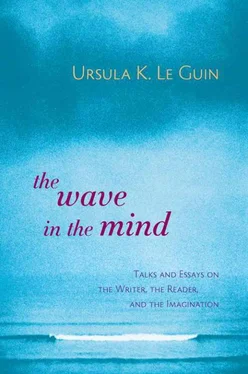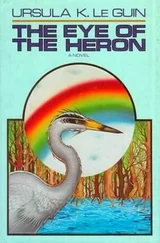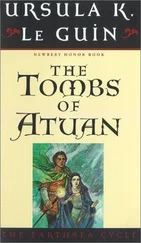I know what worries me most when I look in the mirror and see the old woman with no waist. It’s not that I’ve lost my beauty—I never had enough to carry on about. It’s that that woman doesn’t look like me. She isn’t who I thought I was.
My mother told me once that, walking down a street in San Francisco, she saw a blonde woman coming towards her in a coat just like hers. With a shock, she realised she was seeing herself in a mirrored window. But she wasn’t a blonde, she was a redhead!—her hair had faded slowly, and she’d always thought of herself, seen herself, as a redhead… till she saw the change that made her, for a moment, a stranger to herself.
We’re like dogs, maybe: we don’t really know where we begin and end. In space, yes; but in time, no.
All little girls are supposed (by the media, anyhow) to be impatient to reach puberty and to put on “training bras” before there’s anything to train, but let me speak for the children who dread and are humiliated by the changes adolescence brings to their body. I remember how I tried to feel good about the weird heavy feelings, the cramps, the hair where there hadn’t been hair, the fat places that used to be thin places. They were supposed to be good because they all meant that I was Becoming a Woman. And my mother tried to help me. But we were both shy, and maybe both a little scared. Becoming a woman is a big deal, and not always a good one.
When I was thirteen and fourteen I felt like a whippet suddenly trapped inside a great lumpy Saint Bernard. I wonder if boys don’t often feel something like that as they get their growth. They’re forever being told that they’re supposed to be big and strong, but I think some of them miss being slight and lithe. A child’s body is very easy to live in. An adult body isn’t. The change is hard. And it’s such a tremendous change that it’s no wonder a lot of adolescents don’t know who they are. They look in the mirror—that is me? Who’s me?
And then it happens again, when you’re sixty or seventy.
Cats and dogs are smarter than us. They look in the mirror, once, when they’re a kitten or a puppy. They get all excited and run around hunting for the kitten or the puppy behind the glass… and then they get it. It’s a trick. A fake. And they never look again. My cat will meet my eyes in the mirror, but never his own.
Who I am is certainly part of how I look and vice versa. I want to know where I begin and end, what size I am, and what suits me. People who say the body is unimportant floor me. How can they believe that? I don’t want to be a disembodied brain floating in a glass jar in a sci-fi movie, and I don’t believe I’ll ever be a disembodied spirit floating ethereally about. I am not “in” this body, I am this body. Waist or no waist.
But all the same, there’s something about me that doesn’t change, hasn’t changed, through all the remarkable, exciting, alarming, and disappointing transformations my body has gone through. There is a person there who isn’t only what she looks like, and to find her and know her I have to look through, look in, look deep. Not only in space, but in time.
I am not lost until I lose my memory.
There’s the ideal beauty of youth and health, which never really changes, and is always true. There’s the ideal beauty of movie stars and advertising models, the beauty-game ideal, which changes its rules all the time and from place to place, and is never entirely true. And there’s an ideal beauty that is harder to define or understand, because it occurs not just in the body but where the body and the spirit meet and define each other. And I don’t know if it has any rules.
One way I can try to describe that kind of beauty is to think of how we imagine people in heaven. I don’t mean some literal Heaven promised by a religion as an article of belief; I mean just the dream, the yearning wish we have that we could meet our beloved dead again. Imagine that “the circle is unbroken,” you meet them again “on that beautiful shore.” What do they look like?
People have discussed this for a long time. I know one theory is that everybody in heaven is thirty-three years old. If that includes people who die as babies, I guess they grow up in a hurry on the other side. And if they die at eighty-three, do they have to forget everything they’ve learned for fifty years? Obviously, one can’t get too literal with these imaginings. If you do, you run right up against that old, cold truth: you can’t take it with you.
But there is a real question there: How do we remember, how do we see , a beloved person who is dead?
My mother died at eighty-three, of cancer, in pain, her spleen enlarged so that her body was misshapen. Is that the person I see when I think of her? Sometimes. I wish it were not. It is a true image, yet it blurs, it clouds, a truer image. It is one memory among fifty years of memories of my mother. It is the last in time. Beneath it, behind it is a deeper, complex, ever-changing image, made from imagination, hearsay, photographs, memories. I see a little red-haired child in the mountains of Colorado, a sad-faced, delicate college girl, a kind, smiling young mother, a brilliantly intellectual woman, a peerless flirt, a serious artist, a splendid cook—I see her rocking, weeding, writing, laughing—I see the turquoise bracelets on her delicate, freckled arm—I see, for a moment, all that at once, I glimpse what no mirror can reflect, the spirit flashing out across the years, beautiful.
That must be what the great artists see and paint. That must be why the tired, aged faces in Rembrandt’s portraits give us such delight: they show us beauty not skin-deep but life-deep. In Brian Lanker’s album of photographs I Dream a World , face after wrinkled face tells us that getting old can be worth the trouble if it gives you time to do some soul making. Not all the dancing we do is danced with the body. The great dancers know that, and when they leap, our soul leaps with them—we fly, we’re free. And the poets know that kind of dancing. Let Yeats say it:
O chestnut tree, great-rooted blossomer,
Are you the leaf, the blossom or the bole?
O body swayed to music, O brightening glance,
How can we know the dancer from the dance?
COLLECTORS, RHYMESTERS, AND DRUMMERS
Some thoughts on beauty and on rhythm, written for my own entertainment early in the 1990s, and revised for this book.
COLLECTORS
People collect things. So do some birds and small mammals. The vizcacha, or bizcacha, is a little rodent that digs holes in Patagonia and the pampa and looks like a very round prairie dog with rabbity ears. Charles Darwin says:
The bizcacha has one very singular habit: namely, dragging every hard object to the mouth of its burrow: around each group of holes many bones of cattle, stones, thistle-stalks, hard lumps of earth, dry dung, etc., are collected into an irregular heap…. I was credibly informed that a gentleman, when riding on a dark night, dropped his watch; he returned in the morning, and by searching the neighborhood of every bizcacha hole in the line of road, as he expected, he soon found it. This habit of picking up whatever may be lying on the ground anywhere near its habitation, must cost much trouble. For what purpose it is done, I am quite unable to form even the most remote conjecture: it cannot be for defence, because the rubbish is chiefly placed above the mouth of the burrow…. No doubt there must exist some good reason; but the inhabitants of the country are quite ignorant of it. The only fact which I know analogous to it is the habit of that exraordinary Australian bird the Calodera maculata, which makes an elegant vaulted passage of twigs for playing in, and which collects near the spot, land and sea-shells, bones, and the feathers of birds, especially bright colored ones. ( The Voyage of the Beagle , chapter 7)
Читать дальше




